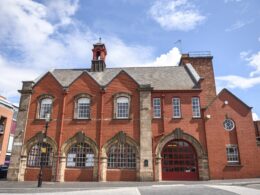By Russ, Jewellery Quarter Research Trust
The site was built by W. Tadman Foulkes as a three-storey building in brick, with stone sills and lintels. It was described as a building with ‘four dwelling houses with shopping attached’, combining domestic and industrial uses. The design, which was probably a speculative development by the jewellery firm of Bishton & Fletcher, consisted of two entries leading into the rear of two pairs of houses with domestic rooms at the front and workshops at the rear. On the ground floor, there was a heated parlour and living room separated by a stair hall opening off the passage, and each house had a separate cellar. The rest of the ground floor of the rear range was used for shopping. In 1891, the Baker family of 6 were residents but by 1901, there were no tenants.
Several companies used the building as a factory, including the electroplate manufacturers A. R Middleton. It is notable that Sgt. E. A. Lowell of the Wiltshire Regiment, an employee of A. R. Middleton, was killed in action in France in June 1970, leaving a widow and four children. Wooley & Co, who occupied the site in the late 19th and early 10th century, used the building as a factory to produce military ornaments. The company were fined in November 1890 for having Percival Gardener and Fisher working when they should have been in school.
Building Timeline
1885-6
Built
1886-1985
A. R. Middleton – electroplate manufacturers
1890
John Green & Co. – Jewellers
1890 –1900s
Wooley & Co. – Military ornaments
1892 – 1960s
George W. Hughes – steel pen manufacturer – later expanded to 8/9 Legge Lane




